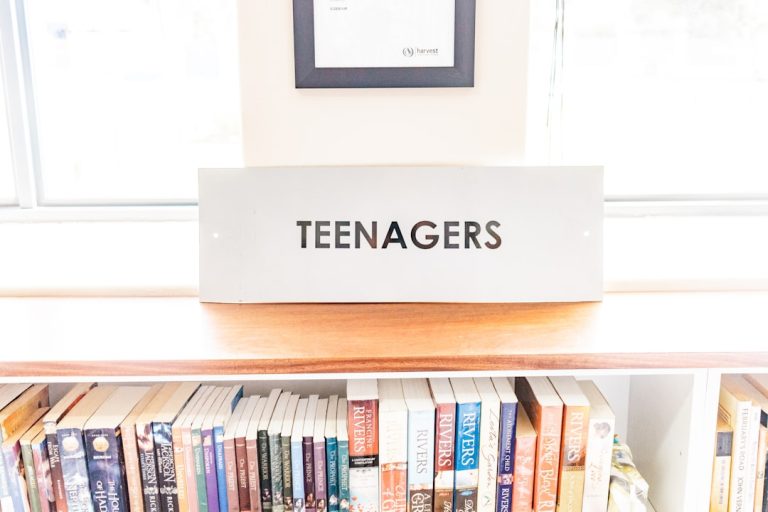
Harold’s Adventures with the Purple Crayon, a beloved children’s book written by Crockett Johnson, has captivated the hearts and minds of readers since its publication in 1955. The story follows a young boy named Harold, who possesses a unique ability: he can create anything he desires simply by drawing it with his purple crayon. This simple yet profound premise serves as a gateway into a world where imagination knows no bounds.
As Harold embarks on his whimsical journey, he encounters various challenges and delights, all while wielding his crayon as a tool for exploration and creativity. The narrative not only entertains but also invites readers to reflect on the power of imagination and the limitless possibilities that come with it. The charm of Harold’s adventures lies in their simplicity and relatability.
Children can easily identify with Harold’s curiosity and desire to explore the world around him. The illustrations, characterized by their minimalist style, allow readers to focus on the story’s essence rather than being distracted by overly complex visuals. This approach encourages young minds to engage actively with the narrative, fostering a sense of agency as they envision their own adventures alongside Harold.
As the story unfolds, it becomes clear that Harold’s journey is not just about creating fantastical landscapes but also about navigating the complexities of childhood, making decisions, and learning from experiences. Through his purple crayon, Harold becomes a symbol of creativity and resilience, inspiring generations of children to embrace their imaginations.
Key Takeaways
- Harold’s Adventures with the Purple Crayon is a beloved children’s book series that follows the imaginative journey of a young boy named Harold.
- The Power of Imagination in Harold’s Adventures is evident as Harold uses his purple crayon to create and navigate through various fantastical worlds and situations.
- Harold’s Creative Problem-Solving with the Purple Crayon showcases his ability to think outside the box and find innovative solutions to challenges he encounters.
- The Magical World Created by Harold’s Purple Crayon is a testament to the limitless possibilities of a child’s imagination and the power of creativity.
- Lessons Learned from Harold’s Adventures with the Purple Crayon include the importance of creativity, resilience, and the ability to overcome obstacles through imagination and resourcefulness.
The Power of Imagination in Harold’s Adventures
Imagination plays a central role in Harold’s Adventures with the Purple Crayon, serving as both the catalyst for his journey and the means through which he navigates challenges. From the very beginning, Harold’s ability to draw his surroundings allows him to shape his reality according to his whims and desires. This imaginative power is not merely a tool for entertainment; it represents the innate human capacity to dream and create.
As children read about Harold’s escapades, they are encouraged to recognize their own imaginative potential, understanding that they too can shape their worlds through creativity. The story illustrates how imagination can transform mundane experiences into extraordinary adventures, highlighting its importance in childhood development. Moreover, Harold’s imaginative journey emphasizes the idea that creativity is not limited to artistic expression but extends to problem-solving and critical thinking.
Each time Harold encounters an obstacle—be it a lack of light or the need for transportation—he uses his crayon to devise innovative solutions. This aspect of the narrative teaches children that imagination is a powerful tool for overcoming challenges and that thinking outside the box can lead to unexpected and delightful outcomes. By showcasing the transformative power of imagination, Harold’s adventures inspire young readers to embrace their creativity, encouraging them to explore new ideas and perspectives in their own lives.
Harold’s Creative Problem-Solving with the Purple Crayon

Throughout his adventures, Harold demonstrates remarkable creative problem-solving skills that resonate deeply with young readers. Each challenge he faces requires him to think critically and use his purple crayon in inventive ways. For instance, when he finds himself in darkness, he simply draws a moon to illuminate his surroundings.
This straightforward yet effective solution exemplifies how imaginative thinking can lead to practical outcomes. By showcasing such scenarios, the narrative encourages children to approach problems with a sense of curiosity and creativity rather than fear or frustration. It reinforces the idea that obstacles can be overcome through innovative thinking and resourcefulness.
Harold’s ability to adapt his drawings to suit his needs further emphasizes the importance of flexibility in problem-solving. When he realizes that he needs a boat to cross a body of water, he quickly sketches one into existence. This fluidity in his creative process illustrates that solutions may not always be linear; sometimes, they require a shift in perspective or an entirely new approach.
By modeling this behavior, Harold teaches children that there is no single right way to solve a problem and that exploring multiple avenues can lead to successful outcomes. His adventures serve as a reminder that creativity is not just about artistic expression but also about finding unique solutions to everyday challenges.
The Magical World Created by Harold’s Purple Crayon
| Metrics | Data |
|---|---|
| Number of Pages | 64 |
| Main Character | Harold |
| Publication Year | 1955 |
| Genre | Children’s literature |
The world that Harold creates with his purple crayon is nothing short of magical, filled with vibrant landscapes and whimsical characters that spring to life from his imagination. Each page turn reveals new wonders—whether it’s a beautiful garden, a friendly dragon, or a vast ocean—showcasing the limitless possibilities that arise from creative thought. This enchanting environment invites readers to immerse themselves in Harold’s journey, sparking their own imaginations as they envision what lies beyond each drawn horizon.
The simplicity of the illustrations allows children to fill in the gaps with their own ideas, making each reading experience unique and personal. Moreover, the magical quality of Harold’s world serves as a metaphor for the boundless nature of childhood imagination. In this realm, anything is possible; gravity can be defied, and reality can be reshaped at will.
This notion resonates deeply with children who often find themselves navigating a world filled with rules and limitations. By presenting a universe where creativity reigns supreme, Harold’s adventures encourage young readers to embrace their imaginative instincts and explore their own creative capacities without fear of judgment or failure. The magic of Harold’s world lies not only in its fantastical elements but also in its ability to inspire children to dream big and believe in their potential.
Lessons Learned from Harold’s Adventures with the Purple Crayon
Harold’s Adventures with the Purple Crayon imparts valuable lessons that extend beyond mere entertainment. One of the most significant messages is the importance of creativity as a means of self-expression and exploration. Through Harold’s experiences, children learn that their thoughts and ideas are worthy of being expressed and explored.
The narrative encourages them to embrace their unique perspectives and use their imaginations as tools for understanding themselves and the world around them. This lesson is particularly crucial in an age where conformity often overshadows individuality; Harold serves as a reminder that creativity is an essential part of personal growth. Additionally, the story emphasizes resilience in the face of challenges.
As Harold encounters various obstacles throughout his journey, he demonstrates perseverance and adaptability—qualities that are vital for success in life. Each time he faces a setback, he responds with creativity rather than despair, illustrating that challenges can be opportunities for growth and learning. This message resonates deeply with children who may encounter difficulties in their own lives, teaching them that setbacks are not failures but rather stepping stones toward achieving their goals.
By embodying these lessons through his adventures, Harold becomes a role model for young readers, inspiring them to approach life with curiosity, creativity, and resilience.
Harold’s Journey of Self-Discovery through the Purple Crayon

Harold’s adventures are not just about external exploration; they also represent an internal journey of self-discovery. As he navigates through various landscapes created by his purple crayon, he learns more about himself—his desires, fears, and capabilities. Each drawing serves as a reflection of his thoughts and emotions, allowing him to express aspects of his identity that may otherwise remain unexamined.
This process of self-discovery is crucial for children as they begin to understand who they are and what they value in life. Through Harold’s experiences, readers are encouraged to embark on their own journeys of self-exploration. Moreover, Harold’s interactions with the world he creates reveal important insights about decision-making and responsibility.
As he draws different elements into existence—be it a house or a friend—he learns that each choice carries consequences that shape his experience. This realization fosters a sense of accountability within him; he understands that his actions have an impact on his surroundings and those within them. By illustrating this aspect of self-discovery, the narrative teaches children about the importance of thoughtful decision-making and encourages them to consider how their choices affect themselves and others.
The Impact of Harold’s Adventures on Children’s Literature
Harold’s Adventures with the Purple Crayon has left an indelible mark on children’s literature since its release over six decades ago. Its innovative approach to storytelling—combining simple text with imaginative illustrations—has inspired countless authors and illustrators to explore similar themes in their works. The book’s emphasis on creativity and imagination has paved the way for other stories that celebrate these qualities, encouraging a generation of writers to craft narratives that empower children to think outside the box.
As such, Harold’s adventures have become a touchstone for those seeking to create literature that resonates with young audiences. Furthermore, the book has contributed significantly to discussions surrounding early childhood education and development. Educators have recognized its potential as a tool for fostering creativity in young learners, using it as a springboard for activities that encourage imaginative play and critical thinking skills.
By integrating Harold’s adventures into classroom settings, teachers can inspire students to engage with literature in meaningful ways while promoting self-expression through art and storytelling. The impact of Harold’s adventures extends beyond mere entertainment; it has become an essential resource for nurturing creativity in educational contexts.
The Legacy of Harold and His Purple Crayon
The legacy of Harold and His Purple Crayon endures through its continued relevance in contemporary culture and education. The character of Harold has become emblematic of childhood creativity, inspiring not only children but also adults who seek to reconnect with their imaginative selves. The book has been translated into multiple languages and adapted into various formats—including animated adaptations—ensuring that its message reaches audiences around the globe.
This widespread appeal speaks to the universal themes present in Harold’s adventures: curiosity, creativity, resilience, and self-discovery. In addition to its cultural impact, the legacy of Harold’s adventures serves as a reminder of the importance of nurturing imagination in future generations. As society increasingly emphasizes standardized testing and conformity in education, stories like Harold’s encourage parents and educators alike to prioritize creative expression as an essential component of childhood development.
By celebrating imagination through literature, we honor the spirit of exploration inherent in every child—a spirit that deserves to be cultivated and cherished for years to come. Ultimately, Harold’s journey with his purple crayon continues to inspire countless individuals to embrace their creativity and explore the limitless possibilities that lie within their imaginations.
FAQs
What is “Harold and the Purple Crayon” about?
“Harold and the Purple Crayon” is a children’s book written by Crockett Johnson. It tells the story of a young boy named Harold who uses his purple crayon to create a world of his own imagination.
When was “Harold and the Purple Crayon” first published?
The book “Harold and the Purple Crayon” was first published in 1955.
Who is the author of “Harold and the Purple Crayon”?
The author of “Harold and the Purple Crayon” is Crockett Johnson.
What age group is “Harold and the Purple Crayon” intended for?
“Harold and the Purple Crayon” is intended for preschool-aged children, typically between the ages of 3 and 5.
Has “Harold and the Purple Crayon” won any awards?
Yes, “Harold and the Purple Crayon” has won several awards, including the National Book Award for Children’s Books in 1956.





